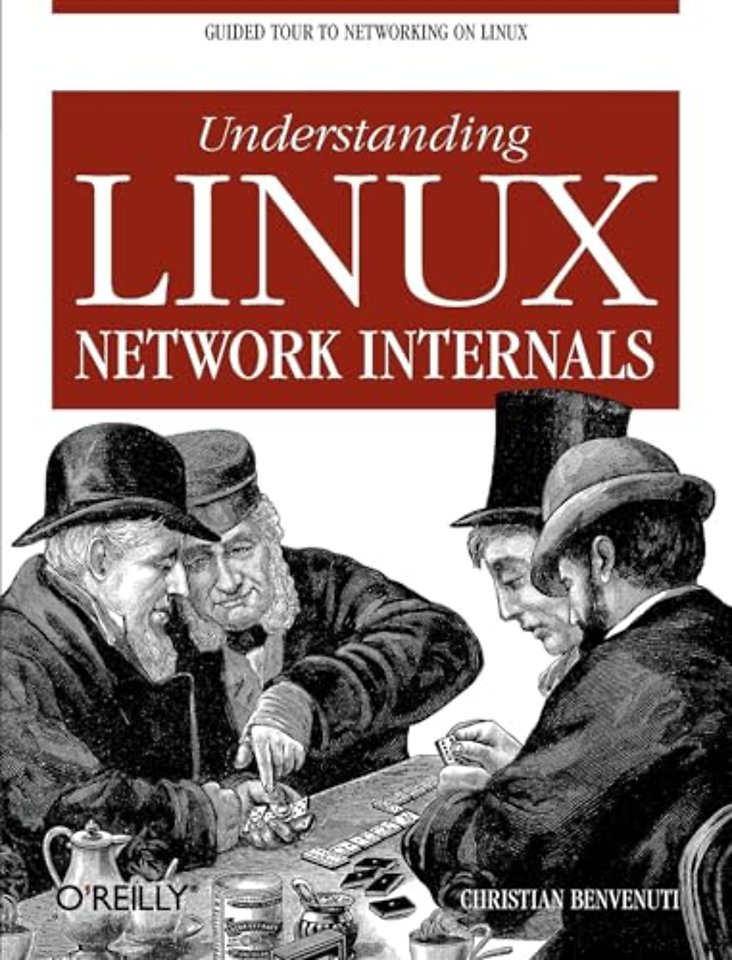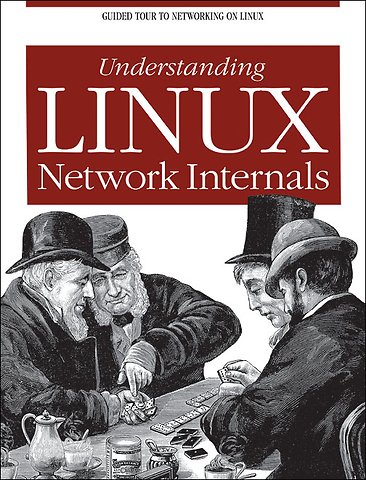Undestanding LINUX Network Internals
Guide tour to networking on Linux
Paperback Engels 2006 1e druk 9780596002558Samenvatting
If you've ever wondered how Linux carries out the complicated tasks assigned to it by the IP protocols - or if you just want to learn about modern networking through real-life examples - Understanding Linux Network Internals is for you.
Like the popular O'Reilly book, Understanding the Linux Kernel, this book clearly explains the underlying concepts and teaches you how to follow the actual C code that implements it. Although some background in the TCP/IP protocols is helpful, you can learn a great deal from this text about the protocols themselves and their uses. And if you already have a base knowledge of C, you can use the book's code walkthroughs to figure out exactly what this sophisticated part of the Linux kernel is doing.
Part of the difficulty in understanding networks - and implementing them - is that the tasks are broken up and performed at many different times by different pieces of code. One of the strengths of this book is to integrate the pieces and reveal the relationships between far-flung functions and data structures. 'Understanding Linux Network Internals' is both a big-picture discussion and a no-nonsense guide to the details of Linux networking.
Topics include:
- Key problems with networking
- Network interface card (NIC) device drivers
- System initialization
- Layer 2 (link-layer) tasks and implementation
- Layer 3 (IPv4) tasks and implementation
- Neighbor infrastructure and protocols (ARP)
- Bridging
- Routing
- ICMP
Author Christian Benvenuti, an operating system designer specializing in networking, explains much more than how Linux code works. He shows the purposes of major networking features and the trade-offs involved in choosing one solution over another. A large number of flowcharts and other diagrams enhance the book's understandability.
Specificaties
Lezersrecensies
Inhoudsopgave
Part 1: General Background
1. Introduction
2. Critical Data Structures
3. User-Space-to-Kernel Interface
Part 2: System Initialization
4. Notification Chains
5. Network Device Initialization
6. The PCI Layer and Network Interface Cards
7. Kernel Infrastructure for Component Initialization
8. Device Registration and Initialization
Part 3: Transmission and Reception
9. Interrupts and Network Drivers
10. Frame Reception
11. Frame Transmission
12. General and Reference Material About Interrupts
13. Protocol Handlers
Part 4: Bridgin
14. Bridging: Concepts
15. Bridging: The Spanning Tree Protocol
16. Bridging: Linux Implementation
17. Bridging: Miscellaneous Topics
Part 5 :nternet Protocol Version 4 (IPv4)
18. Internet Protocol Version 4 (IPv4): Concepts
19. Internet Protocol Version 4 (IPv4): Linux Foundations and Features
20. Internet Protocol Version 4 (IPv4): Forwarding and Local Delivery
21. Internet Protocol Version 4 (IPv4): Transmission
22. Internet Protocol Version 4 (IPv4): Handling Fragmentation
23. Internet Protocol Version 4 (IPv4): Miscellaneous Topics
24. Layer Four Protocol and Raw IP Handling
25. Internet Control Message Protocol (ICMPv4)
Part 6: Neighboring Subsystem
26. Neighboring Subsystem: Concepts
27. Neighboring Subsystem: Infrastructur
28. Neighboring Subsystem: Address Resolution Protocol (ARP)
29. Neighboring Subsystem: Miscellaneous Topics
Part 7: Routing
30. Routing: Concepts
31. Routing: Advanced
32. Routing: Linux Implementation
33. Routing: The Routing Cache
34. Routing: Routing Tables
35. Routing: Lookups
36. Routing: Miscellaneous Topics
Index
Anderen die dit boek kochten, kochten ook
Rubrieken
- advisering
- algemeen management
- coaching en trainen
- communicatie en media
- economie
- financieel management
- inkoop en logistiek
- internet en social media
- it-management / ict
- juridisch
- leiderschap
- marketing
- mens en maatschappij
- non-profit
- ondernemen
- organisatiekunde
- personal finance
- personeelsmanagement
- persoonlijke effectiviteit
- projectmanagement
- psychologie
- reclame en verkoop
- strategisch management
- verandermanagement
- werk en loopbaan







